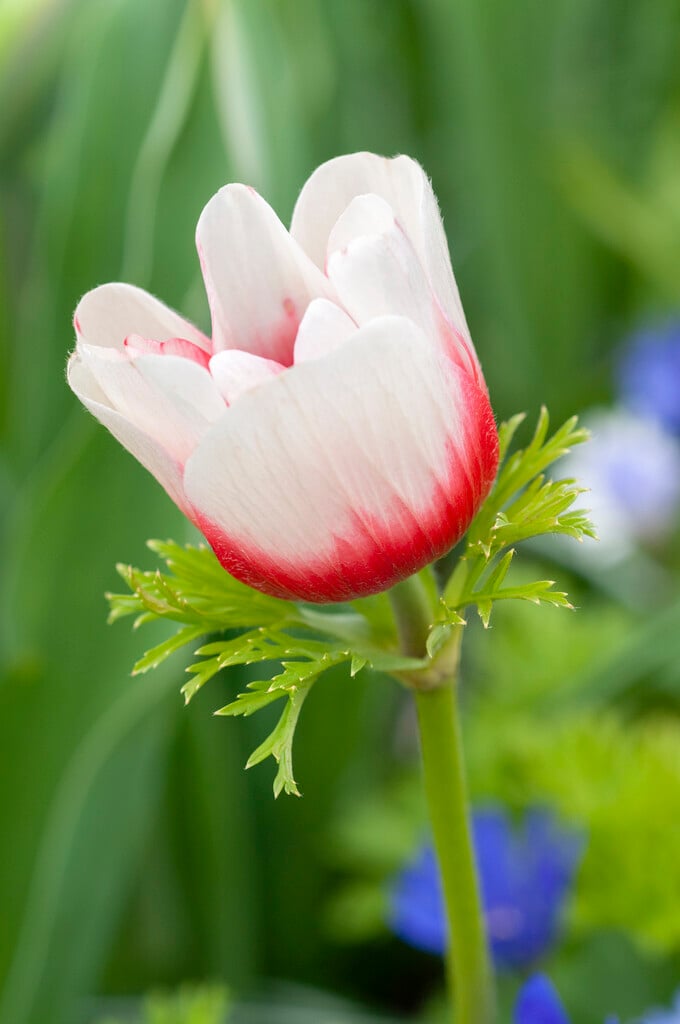Anemone coronaria (De Caen Group) 'Bicolor'
garden anemone 'Bicolor'
A small tuberous perennial with mid-green leaves cut deeply into fine lobes. Has large, striking white flowers with a black centre and a raspberry-red ring surrounding it which slightly stains the petals towards the edge. The flower gradually opens up to a saucer-like shape from March to April after which it will die back until late autumn.
Size
Ultimate height
0.1–0.5 metresTime to ultimate height
2–5 yearsUltimate spread
0.1–0.5 metresGrowing conditions
Moisture
Well–drainedpH
Neutral, Alkaline, AcidColour & scent
| Stem | Flower | Foliage | Fruit | |
| Spring | White Red | Green | ||
|---|---|---|---|---|
| Summer | Green | |||
| Autumn | ||||
| Winter |
Position
- Full sun
Aspect
South–facing or East–facing or West–facing
Exposure
Sheltered Hardiness
H5Botanical details
- Family
- Ranunculaceae
- Native to GB / Ireland
- No
- Foliage
- Deciduous
- Habit
- Clump forming
- Genus
Anemone are herbaceous perennials with fibrous, rhizomatous or tuberous rootstocks, palmately lobed leaves and saucer-shaped, usually 5-petalled flowers
- Name status
Unresolved
How to grow
Cultivation
As a Mediterranean plant, it will grow well in a light, sandy soil, preferably in full sun, making sure it is kept dry while dormant in summer. May need protection from winter frost.
Propagation
Propagate by seed or by division when dormant in summer
Suggested planting locations and garden types
- Cottage and informal garden
- Mediterranean climate plants
- Patio and container plants
- Rock garden
- Low Maintenance
- Flower borders and beds
Pruning
No pruning required
Pests
May be susceptible to leaf and bud eelworm, and damage from slugs
Diseases
May be susceptible to Powdery mildews
Get involved
The Royal Horticultural Society is the UK’s leading gardening charity. We aim to enrich everyone’s life through plants, and make the UK a greener and more beautiful place.
